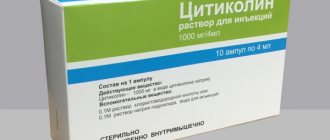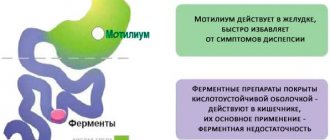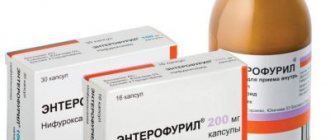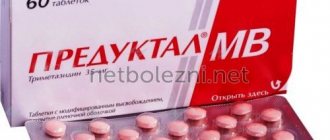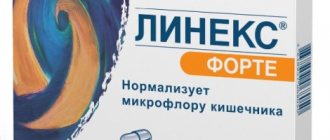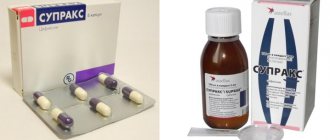Prohibited during pregnancy
Prohibited during breastfeeding
Prohibited for children
Has restrictions for older people
Prohibited for liver problems
Prohibited for kidney problems
Meloxicam is produced by many pharmaceutical companies in different countries. The drug belongs to non-steroidal anti-inflammatory drugs (NSAIDs). The most common area of its application is joint, bone and muscle pain of various origins.
The problem with many anti-inflammatory drugs is the development of atrophic gastritis with long-term use. Meloxicam and its structural analogues are more gentle on the gastric mucosa and are less likely to lead to its atrophy and the development of erosions. This allows you to use high doses for better effect.
Efficacy and safety of Meloxicam
Unlike many other NSAIDs that inhibit COX-1, the action of Meloxicam is aimed at inhibiting COX-2. This allows you to relieve inflammation without affecting the gastrointestinal mucosa. The medicine is characterized by a rapid onset and duration of action for at least 12 hours.
The medication is produced not only in the form of tablets, like many similar drugs, but also in the form of rectal suppositories and a solution for injection. Its use is contraindicated during pregnancy and breastfeeding due to the high risk of complications in the child, including stillbirth. The maximum permissible daily dose of the drug is 15 mg.
Pharmacodynamics and pharmacokinetics
The principle of action of the drug Meloxicam is based on the selective suppression of the enzymatic activity of cyclooxygenase-2 , on the inhibition of the process of prostaglandin . The selectivity of cyclooxygenase-2 decreases with long-term therapy with Meloxicam in high dosages.
The drug suppresses to the greatest extent the synthesis of prostaglandins in the inflammatory focus compared to kidney tissue and the gastric mucosa. Meloxicam is less likely to cause erosive and ulcerative lesions of the digestive tract.
Contraindications
Meloxicam tablets are not prescribed for the so-called “aspirin” triad (intolerance to pyrazolone , acetylsalicylic acid , bronchial asthma and recurrent nasal polyposis ).
The drug is not used for severe pathology of the renal system, breastfeeding , pregnancy , ulcerative lesions of the digestive tract , intolerance to drugs of the NSAID .
Suppositories are not prescribed for diseases of the anus and rectum of inflammatory origin.
Meloxicam should be prescribed to elderly people with caution.
Before using the drug, be sure to consult your doctor.
Meloxicam tablets: main characteristics
Meloxicam is a non-steroidal drug that has anti-inflammatory and antipyretic effects. It helps in eliminating pain and works as an analgesic. Available in 3 forms:
- Pills.
- Solution (in glass ampoules).
- Suppositories.
The active ingredient is meloxicam, a derivative of enolic acid. Dispensed only with a doctor's prescription. The drug is stored at room temperature (no more than 25 degrees) within the general shelf life (no more than 2 years).
Side effects
- Digestive tract: hidden and obvious gastrointestinal bleeding , erosive and ulcerative lesions of the digestive tract, increased levels of liver enzymes, epigastric pain, belching , vomiting , nausea , flatulence , stool disorders in the form of constipation or diarrhea syndrome .
- Nervous system: increased drowsiness , headaches , dizziness .
- Hematopoietic organs: thrombocytopenia , leukopenia , anemia .
- Allergic reactions in the form of blisters , skin rashes , itching .
- Urinary system: increased urea levels, hypercreatininemia , swelling .
- Cardiovascular system: rapid heartbeat, blood flushes to the upper chest, to the skin of the neck and face, increased blood pressure.
Rarely, medullary renal necrosis , glomerulonephritis , interstitial nephritis , and nephrotic syndrome . Possible ringing in the ears .
Instructions for use of Meloxicam (Method and dosage)
Meloxicam tablets, instructions for use
Meloxicam is taken orally with meals. The daily dosage is 7.5 - 15 mg. For other forms of the drug, such as Meloxicam-Prana, Meloxicam-Lugal and Meloxicam-Ratiopharm, the dosage may differ.
For patients on hemodialysis with pathology of the renal system, the recommended dosage is 7.5 mg.
Meloxicam injections, instructions for use
The drug in the form of a solution of Meloxicam DS is prescribed to adolescents and adults over 15 years of age, 7.5 mg or 15 mg once a day deep intramuscularly during the first few days of treatment. For further therapy, it is more advisable to use oral forms of the drug.
Instructions for candles
Suppositories are administered rectally once a day (1 suppository - 15 mg).
The best substitutes in ampoules
For a faster and longer-lasting effect, the best way to administer NSAIDs is intramuscular use. Almost completely absorbed into the blood, the medicine immediately begins its anti-inflammatory effect. This route of administration leads to a reduction in pain within 30 minutes after the injection.
Injections with Meloxicam, as with its analogues, are characterized by a stronger and faster effect. However, NSAIDs in intramuscular ampoules should be used as little as possible. Having reduced the acute inflammatory response, after 3-4 days it is necessary to either discontinue high doses or reduce the dosage.
Amelotex
The drug is a Russian generic of Meloxicam. Produced and used in the same dosage and form. Prescribed in case of allergic reactions to additional components of other NSAIDs.
It has lower bioavailability and is absorbed into the blood by 89%, while meloxicam is absorbed by almost 100%. It affects fertility, which is why the drug is not recommended when planning pregnancy. Penetrates through the blood-placental barrier and into breast milk, which is why it is contraindicated for pregnant and lactating women. With frequent use, it can lead to the development of atrophic gastritis; it is prescribed with caution for gastrointestinal diseases.
Arthrozan
It has lower effectiveness due to the lower dose of the active substance in the ampoule (6 mg). It is recommended to use only at the beginning of treatment of the disease for several days. Then you should switch to other medications.
Effects of the drug
Arthrozan is characterized by high biodegradability. Like other NSAIDs based on meloxicam, it is contraindicated in nursing women and pregnant women. May lead to the development of anemia and thrombocytopenia. It should not be used together with other NSAIDs, especially acetylsalicylic acid. Refers to budget funds, in contrast to similar imported drugs.
Loxidol
The main active ingredient of Loxidol is also meloxicam. Produced by Romania jointly with Georgia. The product quickly and effectively relieves acute and chronic pain of the musculoskeletal system, including those of rheumatic origin. One ampoule contains the maximum permissible daily amount of the substance – 15 mg.
Long-term use of the product is not recommended. Often, 3 days of its use are enough to reduce pain, after which it is recommended to switch to smaller doses of the drug.
Contraindicated in pregnancy and lactating women, due to the risk of complications in the fetus and children.
Like other NSAIDs that inhibit COX-2, they have a lesser negative effect on the gastrointestinal mucosa, but with frequent use they can cause gastric ulcers. Available only by prescription.
Melbek
Turkish analogue of Meloxicam. It does not affect blood coagulation function if used in an acceptable dosage and not used in conjunction with other anti-inflammatory drugs. One ampoule contains 15 mg of the active ingredient (maximum daily dose).
Intramuscular use of the drug in this dosage is permissible only for several days. After which, you should reduce the dose and change the route of administration to oral or rectal, or stop using the drug.
Like other products with the same active ingredient, it is prohibited for diseases of the gastrointestinal tract, pregnancy and breastfeeding, individual intolerance to the medication and its individual components. Considering that its use significantly reduces the contraceptive ability of the intrauterine device, an unwanted pregnancy may occur.
Milixol
The Greek analogue of Meloxicam, which is prescribed for the relief of joint, muscle and bone pain, including those arising from rheumatological and autoimmune diseases. The ampoule contains 15 mg of active ingredient. It is permissible to use 1 ampoule per day.
For maximum effect and prevention of complications at the injection site, Milixol should be injected deep into the muscle.
Has good bioavailability and prolonged action. Long-term use of the drug increases the risk of developing peptic ulcers. Due to the ability to reduce platelet aggregation, it can lead to various bleedings, including uterine ones.
Milixol penetrates the hematoplacental barrier and can lead to the development of malformations in the fetus, therefore pregnancy and breastfeeding are contraindications for its use. The drug is not prescribed to children under 18 years of age.
Interaction
Myelotoxic medications cause an increase in the severity of hematotoxicity of Meloxicam.
With simultaneous therapy with other drugs of the NSAID , the risk of developing gastrointestinal bleeding and erosive and ulcerative lesions increases significantly.
Cholestyramine promotes the rapid elimination metabolites .
Heparin , ticlopidine , indirect anticoagulants, antihypertensive drugs increase the risk of bleeding .
Nephrotoxic effects are enhanced by cyclosporine .
Overdose and interaction with other drugs
If the dosage is violated, the side effects described above are observed. In this case, gastric lavage is indicated. An antidote and antagonist for Meloxicam has not been developed.
If taken together with myelotoxic medications, this may lead to increased hematotoxicity. It is not advisable to take it together with non-steroidal anti-inflammatory drugs - this can lead to ulcerative lesions and bleeding in the digestive organs.
When taken together with anticoagulants and blood pressure lowering agents, the risk of bleeding increases. When taken together with Cyclosporine, toxic effects on the kidneys are possible.
special instructions
Meloxicam is discontinued if side effects develop on the mucous membranes, skin, gastrointestinal bleeding , or peptic ulcers .
In patients with reduced glomerular filtration (after surgical treatment, with nephrotic syndrome , cirrhosis of the liver , chronic heart failure, dehydration , during treatment with diuretics), with a reduced BCC, the development of a clinical picture of chronic renal failure , which is reversible and disappears after completion therapy. Such patients need to undergo daily monitoring of renal function and diuresis.
In case of persistent and pronounced changes in the performance of the hepatic system, the drug is discontinued and special diagnostic tests are performed.
For patients at risk, Meloxicam is prescribed at a minimum dose of 7.5 mg.
The medication may affect driving and performance of certain types of work.
The cheapest similar products
In most cases, diseases of the musculoskeletal system are accompanied by prolonged and frequent pain. Many drugs are quite expensive, and not all patients have the opportunity to buy expensive drugs. But there are effective substitutes, the cost of which is cheaper than most similar drugs.
Melox
Medication in the middle price category, imported from Cyprus. One tablet contains 15 mg of meloxicam. Absorbed into the gastrointestinal tract almost 100%. With a single use, the maximum effect occurs 6 hours after administration, long-term use leads to a faster achievement of the effect after use.
However, frequent use of NSAIDs increases the risk of complications, including gastrointestinal bleeding. The use of corticosteroids enhances the anti-inflammatory effect of meloxicam. Not for children and pregnant women.
When using it, you should stop breastfeeding. Can be used for mild to moderate pulmonary and renal failure, but not more than 7.5 mg per day. Contraindicated for use in patients taking Methotrexate.
Movasin
A Russian drug containing 7.5 or 15 mg of meloxicam in one tablet. It is quickly and almost completely absorbed through the gastrointestinal tract into the blood and begins to act within 3-5 hours. Regular use of the medication for more than 1 year does not affect its effectiveness, but can lead to the development of dangerous side conditions:
- gastrointestinal ulcers;
- bleeding of internal organs;
- bleeding disorders due to the effect on platelet aggregation.
Description of the drug
Not prescribed for children under 18 years of age, during pregnancy and breastfeeding. It is almost completely metabolized in the liver, therefore it is contraindicated in the presence of liver diseases and insufficiency. The medication is prohibited for patients with chronic and acute gastritis. It is undesirable for elderly patients, especially in the presence of concomitant pathologies from the gastrointestinal tract and hematological system.
Diclofenac
A drug based on diclofenac sodium. NSAIDs that inhibit COX-2, resulting in a more pronounced effect on the gastric mucosa. Available in the form of tablets, suppositories and solution for intramuscular injection. It has a strong anti-inflammatory effect with antipyretic properties, but does not relieve severe and acute pain.
Pharmacological features of Diclofenac
Diclofenac is generally prescribed in the complex symptomatic treatment of osteoarthritis, arthritis and osteoporosis to relieve the inflammatory process in tissues and reduce pain symptoms. It acts more effectively and quickly when administered intramuscularly. After oral and rectal administration, the maximum effect is observed after 6-8 hours.
The drug often leads to the development of gastric ulcers, helps to reduce blood clotting and the occurrence of various bleedings. Prohibited in the presence of renal and liver failure. Long-term treatment with this medication is not recommended.
Meloxicam analogs
Level 4 ATX code matches:
Mirlox
Revmoxicam
Xefocam Rapid
Xefocam
Movalis
Mesipol
Lem
Melbek
Movasin
Piroxicam
Lornoxicam
Arthrozan
Texamen
Amelotex
Aroxicam , Aspicam , Zeloxim , Melbek , Melox , Meloxam , M-Kam , Movalgin , Movalis , Revmalgin , Rekoxa , Existen-Sanovel .
Basically, the price of Meloxicam analogues is higher than that of the original drug.
Reviews about Meloxicam
There are many reviews of Meloxicam tablets and reviews of Meloxicam DS injections. Here are some of them:
- “...Meloxicam tablets relieve pain very well and help with cervical osteochondrosis and neck pain. Almost after one tablet, the pain subsides and completely goes away after the full course of treatment with the drug;
- “... I took the medicine one tablet twice a day. Already on the 4th day everything stopped hurting, but I finished the full ten-day course to the end. The dosage of the tablets was 7.5 mg."
Reviews from doctors about the drug Meloxicam in all forms of release and Meloxicam Teva are generally more positive.
Quick and complete pain relief is one of the top priorities of medical care. Pain is the most unpleasant manifestation of the main pathological conditions, so its effective suppression can significantly improve the quality of life of patients and gain their trust, which is important when it comes to the onset of a chronic disease that requires long-term pathogenetic therapy.
Pain therapy is of fundamental importance in musculoskeletal diseases, such as osteoarthritis (OA) and low back pain (LBP), which are currently associated with the majority of cases of chronic non-cancer pain [1-3].
From the point of view of medical science, chronic pain appears to be a serious and independent threat to the patient’s life. Persistent severe pain determines negative changes in homeostasis, mediated by the reaction of the sympathetic-adrenal system - increased blood pressure and heart rate, as well as pro-coagulative changes in the blood coagulation system. These changes lead to a significant increase in the risk of developing dangerous cardiovascular complications (CVD) [1, 2].
In such nosological forms as OA and chronic low back pain, which are not accompanied by visceral pathology, but are characterized by severe pain that often persists for months and years, the risk of developing fatal cardiovascular complications is significantly increased [1, 2].
This position is confirmed by a study by Swiss scientists E. Nüesch et al. [4], who assessed the incidence of deaths in 1163 patients with OA during a follow-up period of about 5 years. According to the data obtained, the risk of death due to cardiovascular disease in patients suffering from this “non-fatal” disease is 1.7 times higher than in the general population. In a subsequent analysis, scientists identified the only factor that was clearly associated with the development of fatal cardiovascular events in patients with OA—severe joint dysfunction that interferes with normal movement. Among those who died, such disorders were observed in 35%, while among survivors - only 17% ( p
<0,001) [4].
Similar results were presented by Japanese researchers M. Tsuboi et al. [5], who observed the dynamics of the condition in 944 patients with various rheumatic diseases for 10 years. It was revealed that in patients with gonarthrosis, the risk of death from cardiovascular complications is more than 2 times higher than in the population (odds ratio - OR - 2.32).
A striking illustration of the relationship between pain and the risk of developing cardiovascular complications was the work of Australian scientists K. Zhu et al. [6], who observed a group of 1484 elderly women (over 70 years old) suffering from chronic LBP for 5 years. Among them, 21.7% initially and 26.9% at the end of the observation period experienced pain every day. In this subgroup, the risk of death from cardiovascular complications was more than 2 times higher (relative risk - RR 2.13 with 95% confidence interval - CI - from 1.35 to 3.34) than in the group of patients in whom pain was noted less frequently .
One cannot fail to note one more, purely practical aspect of the problem of adequate pain relief. Patients come to see a doctor primarily for relief from suffering; “to understand” the situation, to find out an accurate diagnosis is a secondary, although undoubtedly important, goal of seeking medical help. Excessive focus on diagnostic measures and “basic” remedies to the detriment of simple and effective methods of pain control can cause a negative attitude of the patient towards the attending physician and turn him away from the methods of classical medicine. On the contrary, effective elimination of the most painful symptoms will be the most effective way to gain the patient’s trust and achieve strict compliance with a complex regimen of long-term pathogenetic therapy [1, 2].
However, achieving effective control of chronic pain is not easy. An illustration of this is the work of Spanish scientists L. Arboleya et al. [7], who assessed the opinion on the results of treatment of 897 patients with OA who received analgesics for at least 6 months, most often non-steroidal anti-inflammatory drugs (NSAIDs): diclofenac, aceclofenac and piroxicam. 46% of respondents were dissatisfied with the effect of the prescribed medications, and only 1 patient out of 6 considered themselves completely satisfied with the result of pain therapy.
In this regard, the data of British researchers M. Gore et al. are very interesting. [8], who assessed the practice of prescribing analgesics (paracetamol, NSAIDs, tramadol, “weak” and “strong” opioids) in patients with OA and LBP. For various reasons - due to ineffectiveness, adverse events, etc., during the 1st month of treatment, prescribed drugs were discontinued in almost 90% of patients (from 30 to 60% were cases of replacement of therapy, up to 15% - its intensification - the use of various combinations). It can be seen that in the majority of cases (at least ⅔), the analgesic drug initially recommended by the doctor did not live up to expectations and did not become a solution to the pain problem [8].
It should be remembered that the development of pain, especially chronic pain, is a complex, multicomponent pathological process. Local inflammation, muscle spasm, damage to elements of the ligamentous apparatus, biomechanical disorders, dysfunction of the pain system (peripheral and central sensitization, “exhaustion” of antinociceptive mechanisms, etc.) take part in its development [1, 2, 9, 10]. It is obvious that monotherapy, even with the most effective means, cannot always ensure therapeutic success. Only an integrated approach, based on the combined use of drugs with different mechanisms of action, can achieve effective control of chronic pain (Table 1)
.
First-line pharmacotherapy for musculoskeletal pain is undoubtedly NSAIDs. They have a unique combination of analgesic, anti-inflammatory and antipyretic effects, providing effective relief of the main symptoms associated with the pathology of the organs of the organs of the respiratory system [1-3].
The main mechanism of pharmacological action of NSAIDs is associated with the blockade of cyclooxygenase-2 (COX-2), which is formed in areas of tissue damage and is responsible for the active synthesis of prostaglandins (PGs), the most important mediators of pain and inflammation. It is important to note that the analgesic effect of NSAIDs is realized not only by reducing the excitability of peripheral pain receptors. Probably no less important is the influence of NSAIDs on the central mechanisms of pain formation - the phenomenon of central sensitization, which is also mediated by hyperproduction of PG (aseptic neuronal inflammation) and activation of glial cells that arise in response to persistent and powerful pain irritation of the structures of the nociceptive system [1-3 ].
Obviously, if inflammation plays an important role in the pathogenesis of acute or chronic pain (even subclinical, as in OA and dorsalgia), accompanied by active synthesis of biologically active substances such as interleukins 1 and 6, tumor necrosis factor, the use of NSAIDs will be appropriate and necessary. Moreover, in this situation, as data from many clinical studies show, in terms of their therapeutic activity, NSAIDs have a clear advantage over other analgesics - paracetamol and opioids, which do not have anti-inflammatory properties [1-3].
The therapist has an exceptional variety of NSAIDs at his disposal. This creates difficulties for practicing physicians, because even experts cannot always determine the criteria for the merits of drugs that should be used to decide on the choice of a particular NSAID. The situation is further complicated by the active advertising activities of some manufacturing companies, promoting their product as “the most effective and safe among all possible.” However, real practice clearly shows that none of the NSAIDs can be considered the best, and if a drug has an advantage in any parameter, most likely, it will also have certain disadvantages.
The analgesic effect of all NSAIDs when used in therapeutic doses is practically the same. At the very least, there is no indisputable data obtained in the course of a series of methodically correctly organized clinical trials that any drug from this group is significantly superior to others in analgesic action. The main difference between NSAIDs (sometimes very significant) is determined by their safety [3].
Among NSAIDs, there are two polar groups that differ in their selectivity for COX-2 (their main pharmacological “target”): non-selective (n-NSAIDs) and highly selective - “coxibs”. The selectivity of NSAIDs makes it possible to avoid suppression of the activity of the biochemical “brother” of COX-2 - the COX-1 enzyme, the work of which is extremely important for maintaining many vital functions, such as the protective properties of the mucous membrane (M) of the gastrointestinal tract (GIT). Blockade of COX-1 (inherent in n-NSAIDs) leads to a significant increase in the risk of developing severe, life-threatening gastrointestinal pathology (gastropathy and enteropathy associated with NSAID use - NSAID gastropathy and NSAID enteropathy. In this regard, “coxibs” are much less dangerous [3 ].
However, selective suppression of COX-2 (without affecting COX-1) can lead to an imbalance in the synthesis of thromboxane A2 and prostacyclin, which increases the risk of vascular thrombosis. In patients with cardiovascular diseases, this is fraught with an increased risk of developing severe cardiovascular events—myocardial infarction (MI) and ischemic stroke [3]. As you can see, the use of n-NSAIDs and “coxibs” has serious limitations: they are not suitable for all patients (Table 2)
.
Accordingly, two main scenarios can be presented in which the use of representatives of these drug groups is most appropriate.
Thus, “coxibs” are more suitable for relatively young patients who need short-term analgesic therapy and have a moderate risk of developing complications in the form of organic and functional disorders of the gastrointestinal tract in the absence of severe concomitant CV pathology.
n-NSAIDs (except for ketorolac, which is suitable only for short-term use) are more acceptable for patients in the older age group with a moderate risk of developing cardiovascular complications, but without significant risk factors for developing NSAID gastropathy. In most cases, these drugs can only be used in combination with a gastroprotector (proton pump inhibitor).
The position between n-NSAIDs and coxibs should be reserved for drugs with moderate selectivity for COX-2. Their use should lead to fewer significant complications in the form of organic and functional disorders of the gastrointestinal tract, but not be accompanied by a significant increase in the risk of developing cardiovascular complications. This is a kind of “golden mean” that is acceptable for most patients and is especially interesting now, when the medical community, after the bad memory of the “Coxib crisis,” is very wary of highly selective COX-2 inhibitors. At the same time, the problem of NSAID gastropathy, so characteristic of n-NSAIDs, will never lose its relevance.
In the mid-90s of the last century, diclofenac occupied this position. However, at present, this drug no longer meets the high requirements for safe pharmacotherapy. In our country, primarily due to the widespread use of cheap generic versions of this drug, diclofenac is associated with the largest number of complications in the form of organic and functional disorders of the gastrointestinal tract [11]. The situation with the MTR is even worse. Thus, according to a meta-analysis conducted by P. McGettigan and D. Henry [12], (30 case-control studies, including 184,946 patients with cardiovascular events and 21 cohort studies, a total of >2.7 million people), the risk of developing MI when using diclofenac increases by approximately 40% (OR 1.4). In a population-based study by Danish scientists E. Fosbøl et al. [13] taking diclofenac was accompanied by the highest risk among NSAIDs of developing myocardial infarction, stroke, and death from cardiovascular events, which was higher than that of coxibs.
Another representative of the “golden mean” is of much greater interest - the moderately selective COX-2 inhibitor meloxicam, which appeared in 1995. Since then, this effective and fairly safe drug remains one of the most popular representatives of the NSAID group, which is actively used in almost all countries peace.
Meloxicam has been thoroughly tested in a large number of clinical trials; its effectiveness has been studied in a wide range of diseases and pathological conditions, ranging from anesthesiological practice to chronic joint diseases. These works clearly confirmed that meloxicam is in no way inferior in its therapeutic potential to “traditional” NSAIDs for the most common diseases characterized by musculoskeletal pain (OA, LBP, rheumatoid arthritis - RA and ankylosing spondylitis - AS) [14-22].
However, the main advantage of meloxicam should be considered its good tolerability. A series of large randomized clinical trials (RCTs) clearly confirmed a significantly lower number of complications in the form of organic and functional gastrointestinal disorders when using this drug compared to n-NSAIDs.
During the 4-week MELISSA study ( n
=9323) meloxicam at a dose of 7.5 mg was compared with diclofenac at a dose of 100 mg/day.
The total number of side effects in the form of organic and functional gastrointestinal disorders when using meloxicam was significantly less - 13.3% versus 18.7% in the diclofenac group. At the same time, the number of episodes of discontinuation of therapy due to complications in patients receiving meloxicam was 2 times less: 3 and 6.1%, respectively ( p
<0.001). Dangerous complications - clinically pronounced ulcers, gastrointestinal bleeding (GIB) and perforation while taking meloxicam were also observed less frequently (but unreliably) - 5 and 7 cases, respectively [23].
According to a similar plan, the RCT SELECT ( n
=8656), however, piroxicam at a dose of 20 mg was used as a comparison.
This study showed a significant advantage of meloxicam in relation to the risk of developing severe complications in the form of organic and functional disorders of the gastrointestinal tract, which occurred in 7 and 16 patients, respectively ( p
<0.05).
As in the MELISSA RCT, dyspepsia and associated episodes of therapy withdrawal were significantly more common in patients receiving the comparator drug: 10.3 and 3.8% versus 15.4 and 5.3%, respectively ( p
<0.001) [24] .
In the work of D. Yocum et al. [25] 774 patients with OA received meloxicam at doses of 3.75, 7.5 and 15 mg, diclofenac 100 mg or placebo for 3 months. The results of the study showed that the total number of complications in the form of organic and functional disorders of the gastrointestinal tract while taking meloxicam was significantly less than when using diclofenac - 19 and 28%, respectively ( p
<0,05).
The safety of meloxicam has also been confirmed in a number of cohort studies, such as H. Zeidler et al. [26]. This study involved 2,155 German doctors who observed 13,307 rheumatology patients who received meloxicam at a dose of 7.5 mg (65%) or 15 mg (33%) for 1-3 months. The effectiveness and tolerability of the drug were assessed by analyzing the data provided by the attending physicians in the corresponding questionnaires. Although the majority of patients were over 60 years of age, and 12% had a history of ulcers, undesirable effects in the form of organic and functional disorders of the gastrointestinal tract were noted in 0.8%, and pronounced ones in only 5 patients (4 uncomplicated gastric ulcers and 1 perforation) [26 ].
Somewhat earlier, P. Schoenfeld et al. [27] conducted a meta-analysis of 12 RCTs lasting from 1 to 24 weeks, in which meloxicam was compared with diclofenac, piroxicam and naproxen in patients with OA, RA and dorsalgia. It was shown that taking meloxicam was associated with a significantly lower total number of complications in the form of organic and functional gastrointestinal disorders (OR 0.64 with 95% CI from 0.59 to 0.69), the incidence of dyspepsia (OR 0.73 with 95% CI from 0.64 to 0.84), symptomatic ulcers, gastrointestinal tract and perforations (OR 0.52 with 95% CI from 0.28 to 0.96), as well as the risk of discontinuation of therapy due to complications in the form of organic and functional disorders Gastrointestinal tract (OR 0.59 with 95% CI 0.52 to 0.67).
A more recent meta-analysis by G. Singh [25], which included data from 28 RCTs (24,196 patients), also confirms the greater safety of meloxicam at a dose of 7.5 mg compared to traditional NSAIDs in the gastrointestinal tract. Thus, the incidence of gastrointestinal tract when using this dose of meloxicam was only 0.03% (0.2% when taking 15 mg), while in those receiving diclofenac at a dose of 100-150 mg/day it was 0.15% [28].
In order to study the effect of meloxicam on the upper gastrointestinal tract, several years ago we conducted a retrospective analysis of the development of gastric and/or duodenal ulcers in rheumatological patients treated in 2002-2005. on inpatient treatment at the clinic of the Federal State Budgetary Institution NIIR RAMS. The study groups consisted of individuals who underwent esophagogastroduodenoscopy during this period for various reasons: 425 patients receiving meloxicam and 2428 receiving diclofenac (Fig. 1)
.
Figure 1. Detection of ulcers and multiple (>10) erosions of the stomach and/or duodenum in patients regularly receiving meloxicam or diclofenac [29].
In patients taking meloxicam, ulcers occurred almost 2 times less often, including in patients with such a risk factor as a history of ulcers [29]. In recent years, the problem of the negative effects of NSAIDs on the distal gastrointestinal tract has attracted much attention from researchers and practitioners. We are talking, first of all, about NSAID enteropathy - a pathology of the small intestine (SI), which is accompanied by an increase in its permeability and the development of chronic inflammation associated with the penetration of bacteria or their components contained in the chyme into the intestinal wall. This complication can manifest itself as severe gastrointestinal tract complications, perforation and strictures of the colon; however, its most characteristic symptom is subclinical blood loss, leading to the development of chronic iron deficiency anemia (IDA) [3, 30, 31]. Recently, interest in this pathology has been very great, since even in the absence of life-threatening complications, NSAID enteropathy can have a significant negative impact on the patient’s health. After all, chronic iron deficiency anemia determines a significant decrease in the oxygen capacity of the blood, a decrease in resistance to stress and, ultimately, an increase in the risk of developing severe cardiovascular complications.
This is confirmed by the work published in 2012 by G. Sands et al. [32]. The researchers conducted a meta-analysis of 51 RCTs that compared the safety of celecoxib and n-NSAIDs ( n
=50,116), in order to determine the relationship between a decrease in hemoglobin levels and the incidence of life-threatening systemic complications. It turned out that anemia sharply increased the risk of developing severe cardiovascular events. Thus, in 932 patients who developed a clinically significant decrease in hemoglobin levels (more than 20 g/l), the incidence of MI was 0.6%, while in patients who had no signs of anemia it was only 0.2%. Similarly, progression of coronary heart disease (CHD) was noted in 1.2 and 0.3% of patients [32].
NSAID enteropathy is a problem characteristic of “traditional” NSAIDs. There is strong evidence that s-NSAIDs (“coxibs”) are significantly safer than “traditional” NSAIDs with regard to the risk of developing this pathology [3].
The most modern technique that allows you to accurately diagnose the pathology of the jejunum and ileum that occurs while taking NSAIDs is video capsule endoscopy (VCE). It was this method that was used in a number of studies that compared the effects of “coxibs” and n-NSAIDs on the state of MC [3, 33].
In recent years, the first reports of a relatively low incidence of NSAID enteropathy with the use of meloxicam, confirmed by VCE data, have appeared. Thus, we recently carried out work to study the effect of meloxicam (Movalis) and diclofenac on the state of TC in 15 patients with AS. The choice of this nosological form to study the development of NSAID enteropathy was not accidental. Patients with AS have an increased risk of developing TC pathology; there is a known association between chronic inflammatory bowel diseases and seronegative spondylitis. In addition, patients with AS often take NSAIDs, often for a long time and in high doses [34].
According to the results obtained, certain changes in the TC CO - the presence of inflammation, hemorrhages, erosions or ulcers - were detected equally often when taking meloxicam 15 mg/day or diclofenac 100-200 mg/day: 71.4 and 75%, respectively. However, the average number of erosions was not significantly lower in those receiving Movalis: 6.2±4.7 and 9.4±7.3, respectively [34].
Our data are consistent with the data of Y. Maehata et al. [35]. They performed VCE in 29 volunteers with initially normal TC status who received meloxicam 10 mg/day or celecoxib 200 mg/day for 2 weeks. The number of people in whom TC pathology was identified after a course of NSAIDs was less when using meloxicam than when taking coxib - 26.7 and 42.9%, respectively.
It can be stated that in relation to cardiovascular complications, meloxicam is at least no worse than “traditional” NSAIDs. Thus, in a series of RCTs conducted in the late 90s of the 20th century, it was shown that the risk of developing severe cardiovascular events when using meloxicam does not exceed that when using placebo.
According to the results of the meta-analysis of 28 RCTs conducted by G. Singh [28], the incidence of MI with meloxicam was lower than with diclofenac: 0.09% for a dose of 7.5 mg/day, 0.19% for 15 mg /day and 0.22% for diclofenac 100-150 mg/day.
It should be noted that according to the results of the work presented above by P. McGettigan and D. Henry [12], meloxicam has a weak (not exceeding the average level for all NSAIDs), inherent in the entire class of NSAIDs, ability to increase the risk of developing myocardial infarction by approximately 20% ( OS 1.2). According to these data, meloxicam is inferior to naproxen, but is at the level of celecoxib and ibuprofen and superior to diclofenac (OR 1.4, i.e., a 40% increased risk).
Comparable results were presented by Finnish scientists A. Helin-Salmivaara et al. [36]. They conducted a large population-based study in which the RR of CV events associated with NSAIDs was assessed in 33,309 patients with MI (138,949 matched controls; Fig. 2
).
Figure 2. Risk of developing MI while taking various NSAIDs (data from a population-based study conducted in Finland: 33,309 patients with MI, 138,949 controls) [36].
The risk level for those taking meloxicam was at an average level - OR 1.25. This is slightly more than among those taking naproxen (OR 1.19), but clearly less compared with diclofenac (OR 1.35) and especially nimesulide (OR 1.69). There is a very interesting fact: meloxicam was once studied as a component of the treatment of coronary artery disease (!). In the NUT-2 study, 60 patients with acute coronary syndrome who received aspirin and heparin as antithrombotic therapy for 1 month were additionally prescribed meloxicam 15 mg/day. Another 60 patients undergoing similar antithrombotic therapy formed a control group and were assigned a placebo. Treatment results in the meloxicam group were clearly better. Thus, among the patients receiving this drug, no one developed an MI and not a single patient died; at the same time, in the control group there were 2 cases of MI and one coronary death. In group 1, revascularization was required in 6 (10%) patients, and in group 2 - 15 (25%; p
<0,05) [37].
Nowadays, such research seems rather like medical casuistry; however, it may serve as a good illustration of the favorable tolerability of meloxicam in patients with risk factors for developing cardiovascular disease.
Meloxicam has another important advantage: unlike “traditional” NSAIDs, it does not interact adversely with low doses of aspirin and does not reduce the antiplatelet potential of the latter. This was confirmed by an epidemiological study by G. Singh et al. [38], based on an analysis of the California database of patients who had suffered a myocardial infarction ( n
=15,343). Patients receiving meloxicam in combination with aspirin had a significantly lower risk of MI than those receiving the drug without aspirin: OR 0.53 and 1.56, respectively. At the same time, the popular analgesic ibuprofen clearly worsened the effect of aspirin. In patients receiving these drugs together, the risk of developing MI was even slightly higher than in those taking ibuprofen alone: OR 1.2 and 1.08, respectively [38].
When discussing the benefits of meloxicam, you should pay attention to the low risk of allergic skin reactions. Although these complications are rare with the use of NSAIDs, they can nevertheless be a serious problem in some cases. Meloxicam is quite safe in this regard. Thus, according to American authors, during the first 2 years of use of this drug in the United States, not a single episode of Stevens-Johnson syndrome or toxic epidermal necrolysis was recorded (for example, 47 episodes while taking celecoxib) [39]. The low incidence of skin reactions when using meloxicam was also noted by K. Ward et al. [40], who published a methodological review in 2010.
Moreover, there are a number of studies showing the possibility of using meloxicam in patients who previously experienced skin allergic or bronchospastic reactions when using aspirin or other “traditional” NSAIDs [41, 42].
Severe hepatotoxic reactions are also rare side effects of NSAIDs. Nevertheless, assessing the risk of developing complications in the form of liver dysfunction is relevant for a number of representatives of this drug group, such as diclofenac and nimesulide [3]. For example, among 17,289 participants in the 18-month RCT MEDAL (comparing etoricoxib with diclofenac) who received diclofenac, a three-fold increase in alanine aminotransferase activity was observed in 3.1%, and a ten-fold increase in 0.5% [43]. Although not a single episode of the development of liver failure or jaundice was recorded, such an obvious negative dynamics of biochemical parameters is cause for concern and is the reason for interruption of therapy.
These problems, fortunately, are not typical for meloxicam.
In the available literature, during treatment with this drug, only isolated cases of asymptomatic cases are described, but no significant increase in transaminase levels or clinically significant liver dysfunction was noted [44, 45].
The comparative hepatotoxicity of various NSAIDs was studied in the work of Italian authors G. Traversa et al. [46]. They compared the incidence of liver dysfunction in 397,537 patients treated with NSAIDs in 1997-2001. According to the data obtained, meloxicam demonstrated the best tolerability. The incidence of hepatotoxic reactions with its use was 23.6 episodes per 100,000 person-years. The similar rate for nimesulide, diclofenac and ibuprofen was significant - 35.2, 39.2 and 44 episodes per 100,000 person-years [46].
Concluding the review, it should be noted that the benefits of any drug are determined not only by successful pharmacological properties and favorable results of clinical trials. For practicing doctors, the “reputation” of a drug is of great importance, which is acquired over years of its successful use in real clinical practice.
Meloxicam is a representative of NSAIDs, whose good “reputation” is beyond doubt. This drug is well known to doctors all over the world; they trust its effectiveness and good tolerability and actively use it in their work. It should be noted that the good “reputation” of meloxicam is due to a specific original drug, known abroad as Mobic, and in Russia as Movalis. It was he who was tested in numerous clinical trials, ultimately proving its therapeutic potential and favorable tolerability profile. The presence of similar benefits in numerous generic meloxicam products still requires significant evidence.
The position of meloxicam (Movalis) among other NSAIDs seems to be the most successful. Of course, this drug cannot be considered completely safe, like any other representative of this drug group. However, it is well tolerated and has a relatively low risk of developing serious complications, such as dysfunction of both the gastrointestinal tract and the cardiovascular system; it is quite effective and easy to use. In general, meloxicam today is a first-line drug for many patients suffering from acute and chronic diseases of the joints and spine.
Meloxicam price, where to buy
Price Meloxicam tablets 7.5 mg 20 pcs. – 60 rub. The average price of Meloxicam in injections is 90 rubles. for a pack of 3 ampoules. The cost of Meloxicam-Prana tablets is 40-50 rubles. The average price for candles is 200 rubles.
The price of Meloxicam ampoules in Ukraine is 90-170 UAH, the cost of the drug in tablets is 45-150 UAH.
- Online pharmacies in RussiaRussia
- Online pharmacies in UkraineUkraine
- Online pharmacies in KazakhstanKazakhstan
ZdravCity
- Meloxicam tablets 15 mg 20 pcs. JSC Canonpharma Production
70 rub. order - Meloxicam tablets 15 mg 20 pcs. Ozone LLC
112 rub. order
- Meloxicam Bufus solution for intramuscular injection. 10mg/ml 1.5ml 5pcs JSC "PFK Obnovlenye"
403 rub. order
- Meloxicam DS solution for intramuscular injection. input 10mg/ml amp. 1.5ml №3VetProm AD
180 rub. order
- Meloxicam-Teva tablets 7.5 mg 20 pcs. Teva Pharmaceutical Works Private Limited Company
RUB 207 order
Pharmacy Dialogue
- Meloxicam (tab. 15 mg No. 20)Vertex
RUB 256 order
- Meloxicam (tab. 7.5 mg No. 20) Kanofarma CJSC
57 RUR order
- Meloxicam (amp. 10 mg/ml 1.5 ml No. 3) Ozone LLC
RUB 173 order
- Meloxicam-Akrikhin (tab. 7.5 mg No. 20) Uniquem Laboratories
88 rub. order
- Meloxicam-Teva (tab. 15 mg No. 20) Teva
RUB 273 order
show more
Pharmacy24
- Meloxicam-LH 0.015 g No. 20 tablets AT "Lekhim-Kharkiv", Ukraine
56 UAH order - Meloxicam-KV 15 mg N20 tablets PAT "Kiev Vitamin Plant", Kiev, Ukraine
74 UAH order
- Meloxicam-Teva 15 mg/1.5 ml No. 5 solution
125 UAH order
- Meloxicam N 10 mg/ml 1.5 ml No. 5 solution for injection
132 UAH order
- Meloxicam-Teva 15 mg No. 10 tablets Merkle GmbH, Nimechchina
62 UAH.order
PaniPharmacy
- MELOXICAM ampoule Meloxicam solution d/in. 10 mg/ml 1.5 ml No. 5 Ukraine, Pharmstandard-Biolek
91 UAH order
- MELOXICAM tablets Meloxicam-Lx tablets. 0.015g No. 20 Ukraine, Lekhim-Kharkov CJSC
64 UAH order
- MELOXICAM ampoule Meloxicam solution d/in.15 mg/1.5 ml.amp. No. 5, Zentiva
171 UAH order
- MELOXICAM ampoule Meloxicam-ratiopharm solution d/in.15mg/1.5ml No. 5 Greece, Help
128 UAH order
- Meloxicam tablet 7.5 mg No. 20 Ukraine, MaxPharma
102 UAH order
show more

